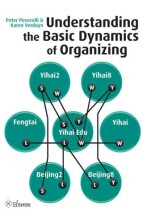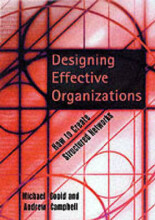Daunno: The role of institutional and market forces in divergent organizational change
22 important questions on Daunno: The role of institutional and market forces in divergent organizational change
What is the focus of the paper of Daunno?
What are organizational templates? (Daunno)
Recap: Organizations often arrange their core activities according to accepted models/templates. What causes them to abandon and replace them for a different one? (2)
2. Strong, heterogeneous institutional forces: influential but diverse regulations, norms and cognitive models (= opportunity)
- Higher grades + faster learning
- Never study anything twice
- 100% sure, 100% understanding
Organizations often arrange their core activities according to accepted models, templates, in their field. What is the consequence of this? (Daunno)
On which literature gap does Daunno base it's research?
Prior studies may field different explanations for divergent organizational change because they examined organizational fields that differ in the kinds of market and institutional forces that affect them. What does Daunno do in this study?
Organizations that face strong. local market forces will probably make more divergent changes. Why is that according to Daunno? Formulate H1.
H1: The lower the level of demand in an organization's local market, the more likely it is to make a divergent change.
The addition of an organization to a population, has stronger competitive effects on neighboring organizations than on those that are more distant. What is the impact on divergent changes, formulate H2? (Daunno)
H2: The closer the geographic distance between an organizations and its closest market competitors, the more likely that the organization will make a divergent change.
The size of organizations relative to competitors in their local market is likely to influence divergent change, why? Formulate H3. (Daunno)
H3: Organizations that are smaller than their market competitors ar emore likely to make divergent changes.
What is the influence of service and product mix relative to competitors on divergent change according to Daunno? Formulate H4.
H4: Organizations that have disadvantages in services/products relative to local market competitors are more likely to make divergent changes.
According to Daunno institutional forces also play a role regardign divergent changes. Explain:
Regulation (government policies etc.) can promote or inhibit divergent change. Which hypothesis is formulated by Daunno?
H5: Organizations that meet regulatory requirements in their fields are less likely to make divergent changes.
Government policy (legislation) can promote and prevent strong competition. What is the effect on divergent change? Which hypothesis of Daunno fits this thought?
H6a: Pro-competition regulation will promote divergent organizational change
H6b: Anti-competition regulation will inhibit divergent organizational change
Governmental regulation/policies (legislation) also play a contradictory role in divergent change by either limiting or increasing resources (f.e. capital) for organizations. Which 2 hypotheses did Daunno formulated?
H7b: Legislation that provides resources to support organization's use of alternative templates will promote divergent organizational change.
The most important norms and values of divergent change are those that make such change acceptable to actors who own/govern organizations. What is the difference in public/non-profit and profit organization according to Daunno? Which hypothesis suits this?
H8: Public and private non-profit organizations are less likely to make divergent changes than for-profit organizations.
Governance norms that specify central control of complex organizations will promote divergent change among the various units or divisions that belong to such organizations. Why? Formulate a hypothesis that suits this (Daunno).
H9: Organizations that are member of multidivisional firms are more likely to make divergent changes.
Organizations that adopt alternative templates provide cognitive models of divergent change that spread in an organizational field through mimicry. How does this influence divergent change? Formulate the last hypothesis.
H10: Organizations are more likely to make divergent changes to the extent that they have nonlocal model of such change in organizations that faced similar market and institutional forces.
What is the study's unit of analysis? How did Daunno gathered data?
Daunno's results provide relatively strong support for their hypotheses. Summarize their hypotheses/thoughts.
Which thought is not strong supported according to Daunno?
Can the relative strong results of Daunno be generalized?
What could future research study according to Daunno?
The question on the page originate from the summary of the following study material:
- A unique study and practice tool
- Never study anything twice again
- Get the grades you hope for
- 100% sure, 100% understanding






























